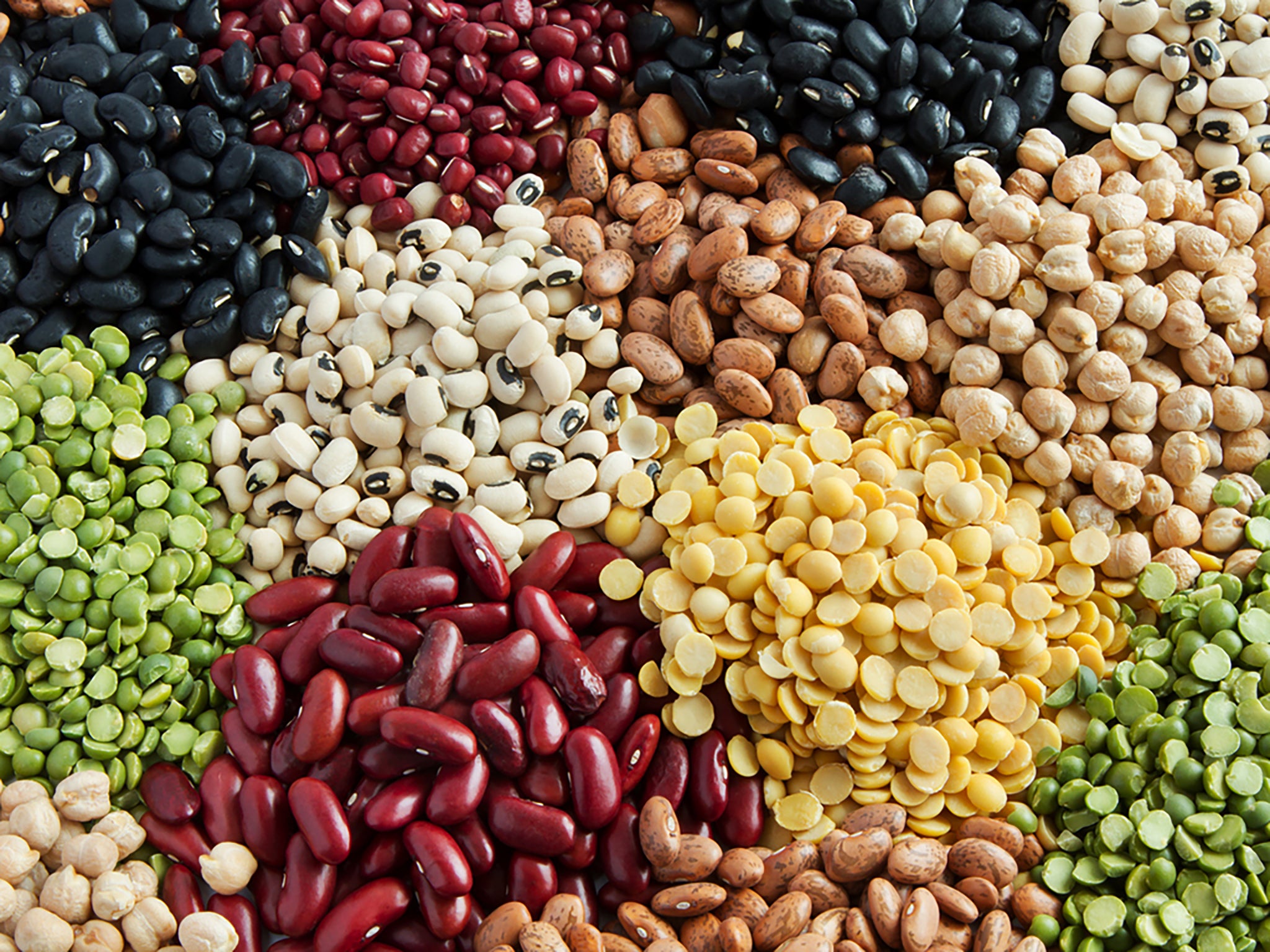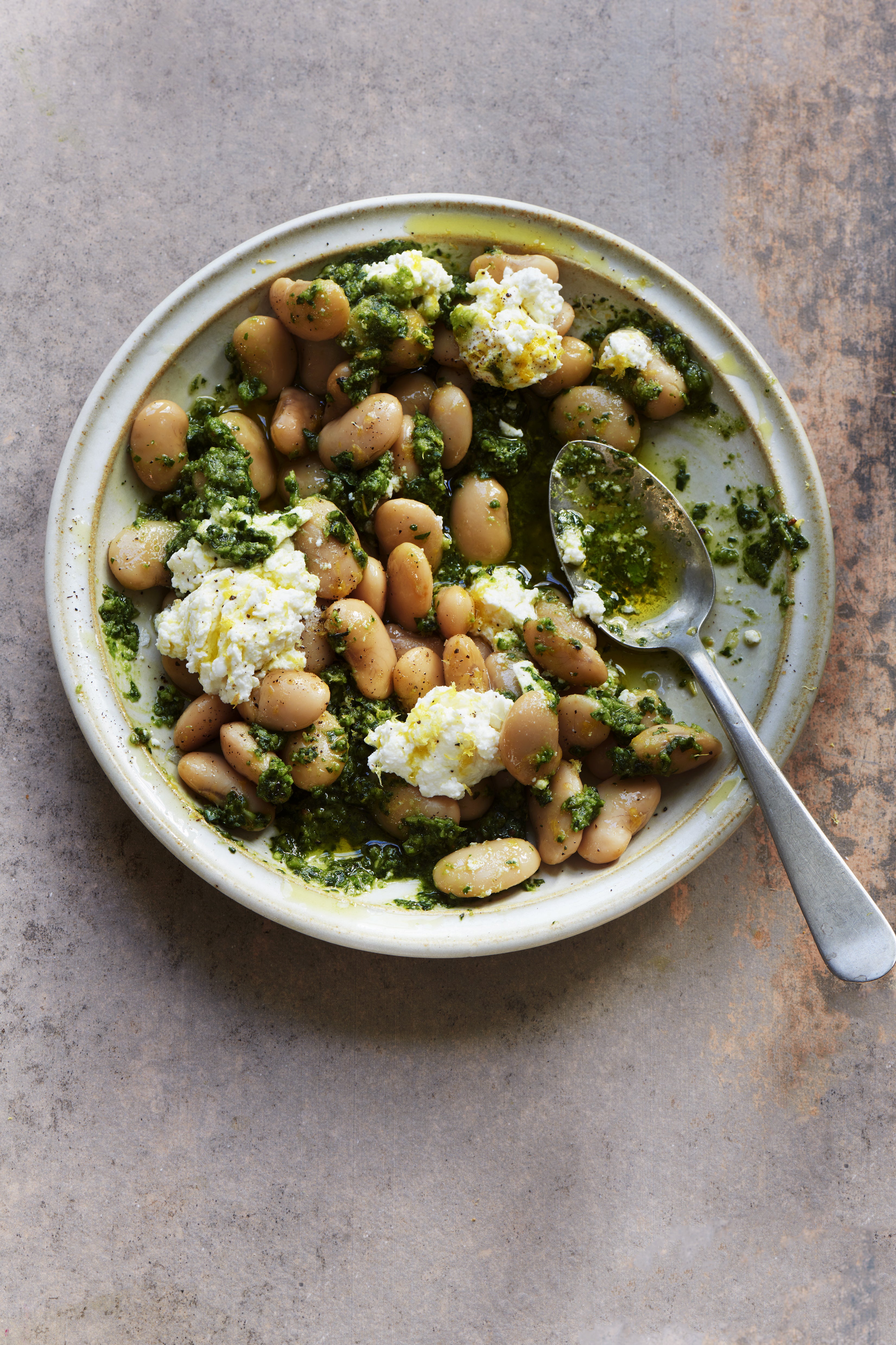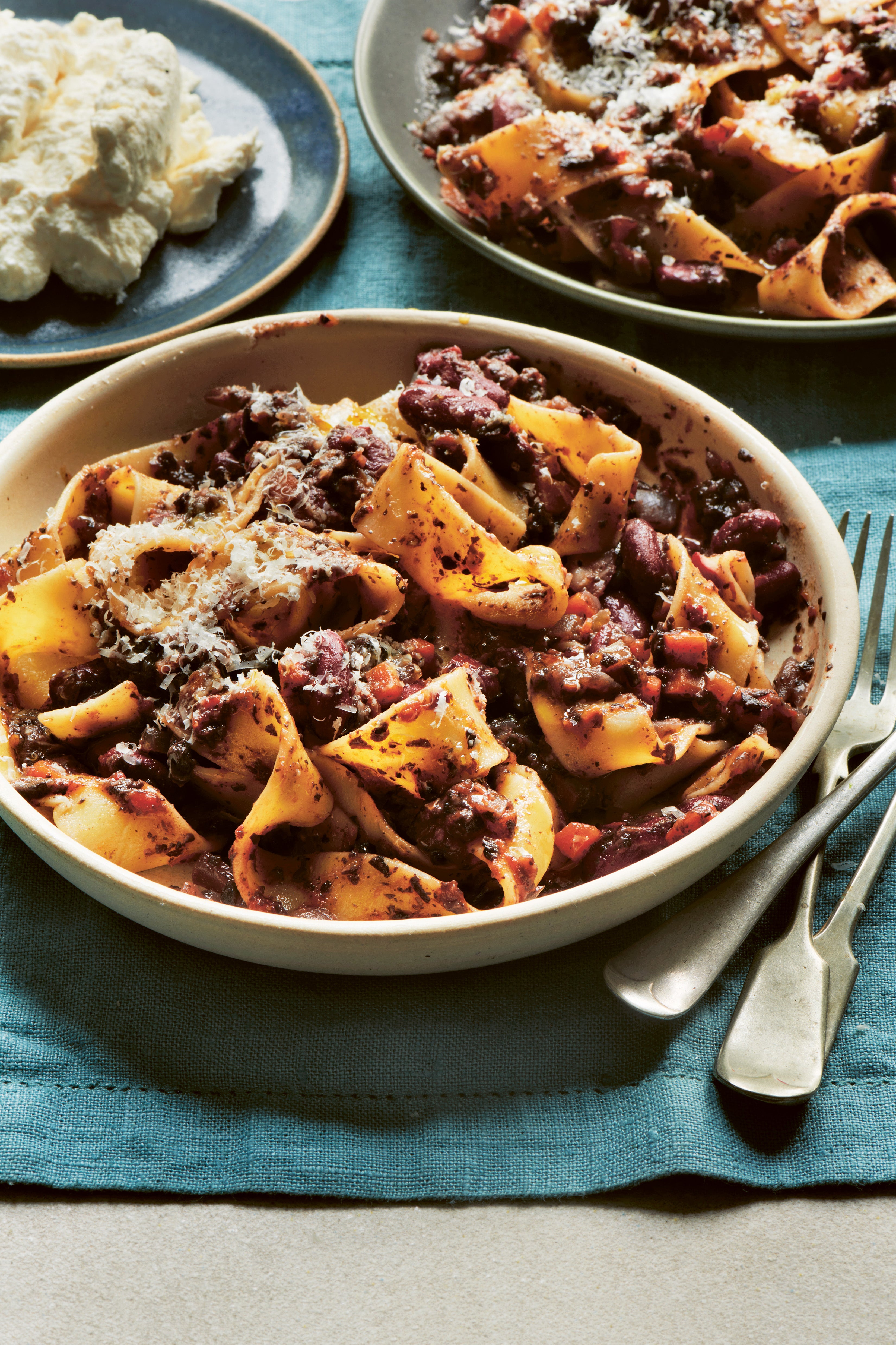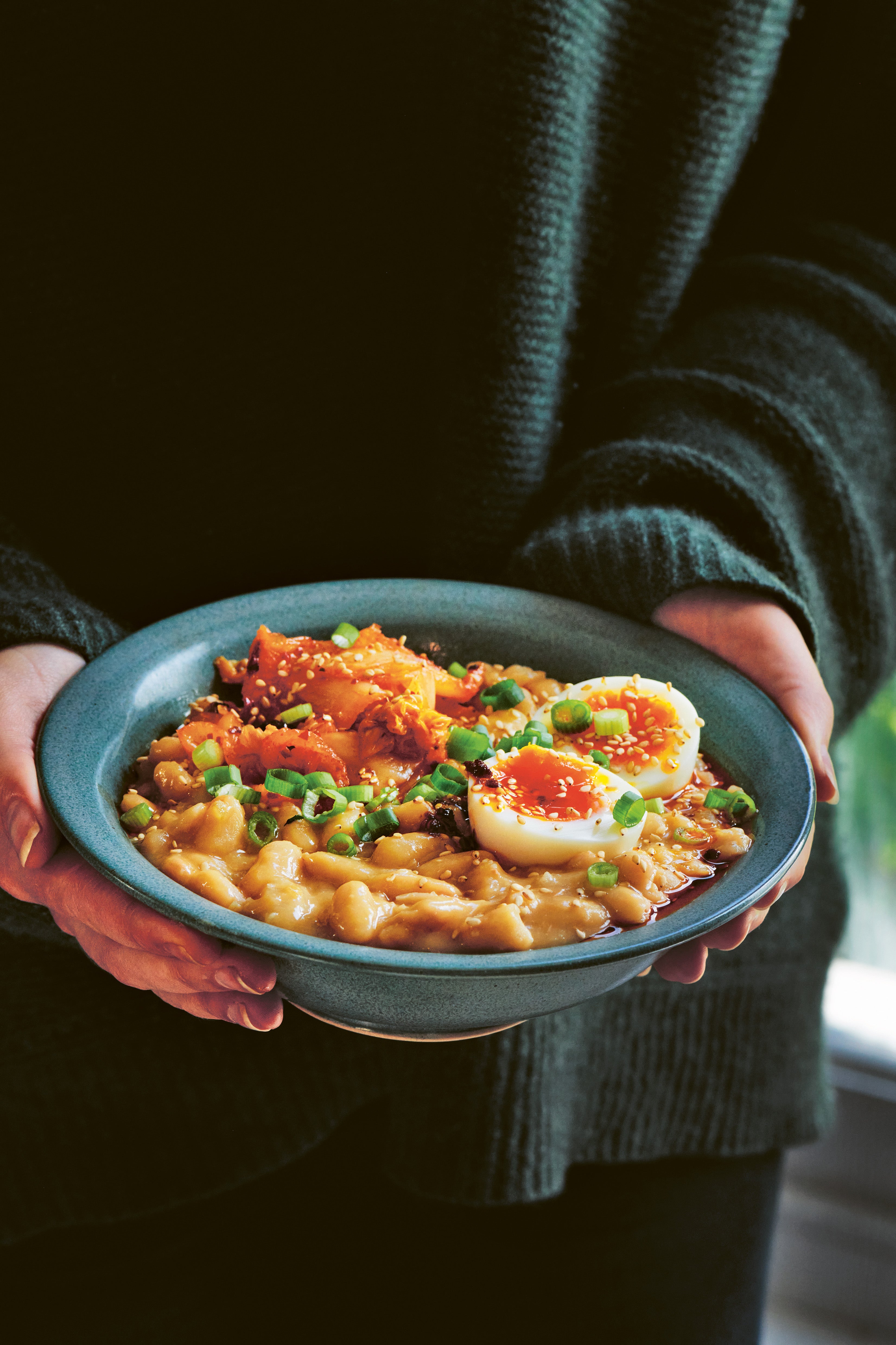Cool beans: Why 2024 is set to be the year of the legume
Beans may be small but they are mighty, with a key role to play in feeding the world while fighting climate change. Sarah Barratt spills the proverbial

How do we feed the world without destroying the planet? It’s a question that’s been puzzling scientists for decades. Lab-grown meat? 3D printers? Turns out the answer – or at least part of it – has been here all along, gathering dust at the back of our cupboards.
“While there is no singular way to solve our complex challenges, there is a powerful ingredient: beans,” says Paul Newnham, executive director of the UN’s SDG2 Advocacy Hub, which aims to end hunger, achieve food security, improve nutrition and promote sustainable agriculture.
“Beans are a climate-positive solution that help tackle the global food, climate and cost of living crises,” he says. Small wonder the UN wants us to eat more of them. Its Beans Is How campaign aims to double global consumption by 2028, promoting beans as a simple and surprisingly versatile ingredient.
They are also incredibly nutritious. “Beans are fantastic for your health because they’re so high in fibre – more than most fruit or veg,” says Dr Emily Leeming, scientist, registered dietitian and author of the Second Brain newsletter. “Half a can contains a whopping 7g of fibre – an amount linked to a 6 to 7 per cent lower risk of type II diabetes, heart disease and stroke.”
“Beans are nutritional powerhouses,” adds public health nutritionist Ali Morpeth, who works on the Beans Is How campaign. “They are recognised as both a vegetable and protein source in our national dietary guidelines. This makes eating a portion of beans a win-win as it counts as one of your five-a-day, a source of protein and also provides fibre.”
As luck would have it, beans are also delicious (or, at least, have the potential to be). Just ask Amelia Christie-Miller. The founder of The Bold Bean Co, a luxury brand that stocks Sainsburys, M&S and Waitrose with the creamiest versions money can buy, she is on a mission to make beans the stars of the show, not the side dish. “Beans have had it tough,” she says. “I started life hating them: cold three-bean salads, sickly baked beans, bullet-like chickpeas – no thank you.” That all changed one fateful day in 2021, when – hungover and hungry – she reached for a jar of Spanish butter beans and realised how delicious they were.
From there, a bean obsession began. Christie-Miller, who previously worked in the food sustainability sector, realised that beans have huge potential to help fix a broken food system. “Forget lab-grown meat. Beans are the ultimate plant-protein,” she says. “They offer texture and heartiness – everything we’re craving as we reduce meat and refined carbs. They’re the food group that will enable global meat reduction and help fight climate change.”

Nick Saltmarsh agrees. He is the co-founder of Hodmedod’s – a brand working with British farmers to produce lesser-known pulses and grains. “Pulses are incredibly low-impact, especially compared with animal protein. They require less land, less water, and less or no fertiliser,” he says. “Plus, leguminous plants have the amazing ability to take nitrogen from the air and turn it into fertility in the soil.” If that weren’t enough, he adds, they are superb ingredients. “Satisfying and sustaining, they can be milled, roasted, sprouted and fermented to produce a vast array of foods with wonderfully different flavours and uses.”
Set up in 2012, Hodmedod’s now keeps restaurants like Apricity, River Cottage and Heckfield Place full of beans. “It’s a long list,” adds co-founder Josiah Meldrum. “We’ve been doing this for well over a decade and it’s amazing how things have changed. Demand really is growing, our sales are up by about 50 per cent this year.”
Varieties grown by Hodmedod’s farmers include fava beans and carlin peas (a firm and nutty alternative to chickpeas). Both are ancient crops – grown in Britain since the Iron Age but rarely eaten in recent centuries. Now, Hodmedod’s have teamed up with The Bold Bean Co to produce jarred British-grown carlin peas – available in Waitrose from February.
At between £4 and £5 a jar, Bold Beans are pricier than other varieties, but Christie-Miller says they’re well worth it. “For over 50 years, beans have been commodified: adapted and crossbred to make the cheapest product possible. This has led to the perception of beans as tasteless, and watery,” she says. “The beans we source are varieties grown for flavour rather than yield. This makes them more expensive. But we see it as essential to deliver on our mission – to make you obsessed with beans, by giving you the best of beans.”
Plus, she points out, when beans are this good, they don’t need much faffing about with. “When beans are higher quality, they’re a dish in themselves, served with olive oil and lemon zest,” she says. But they also lend themselves to a host of exciting recipes – as the Bold Bean Co’s Instagram page attests. On it, Christie-Miller shares dozens of innovative recipes – ranging from red bean ragu to unctuous mushroom bean-otto (a risotto made with beans instead of rice). This year, she even created an entire cookbook of bean-based dishes, Bold Beans: Recipes To Get Your Pulse Racing, featuring recipes from top chefs like Hugh Fearnley-Whittingstall, Thomasina Miers and Melissa Helmsley (all big Bold Bean fans).
“We want people to reimagine red beans beyond chilli con carne and chickpeas beyond hummus, celebrating how versatile beans can be in the kitchen,” muses Christie-Miller. “Beans really are the perfect way to create satisfying, veg-centric dishes that don’t compromise on flavour.” Maybe they are a little bit magic.
Ricotta and pesto butter beans

Zesty lemon, creamy ricotta and punchy pesto, this can be served as a speedy weeknight dinner with a fresh side salad, or topped with some roasted toms for a burst of sweetness and colour. If wild garlic is in season, swap the garlic clove for a bunch of wild garlic leaves.
Serves: 2-3
Time: 10 minutes
Ingredients:
700g (1lb 9oz) jar Queen Butter Beans with their bean stock if you like
250g (9oz) ricotta (or burrata or stracciatella cheese)
Zest of 2 lemons, plus juice to taste
Freshly ground black pepper
For the pesto:
Large handful of pine nuts, toasted (or walnuts)
Large bunch of basil (about 30g/1oz)
1 garlic clove
Good handful of grated vegetarian hard cheese or Parmesan (about 25g/1oz)
4-5 tablespoons olive oil, plus extra to serve
To serve:
Juicy charred tomatoes, to top
Fresh rocket salad
Method:
- To make the pesto, add the pine nuts, basil, garlic and cheese to a blender or food processor, along with 4 tablespoons of the olive oil. Blitz until you have an oozy, purée-like consistency; you may need to add more oil to bind the mixture together. You could also try doing this in a pestle and mortar for a chunkier texture.
- Next, prepare the butter beans. In winter, we like serving this as a brothy bean base, so we recommend saving some of the bean stock and warming through with the beans in a pan. For summer, we like it lighter, so simply drain and rinse the beans and don’t bother to warm through.
- Spoon the beans onto your serving plate and dollop over the ricotta.
- Drizzle over the pesto and scatter over the lemon zest, plus a small squeeze of the juice if you like a real zing! Finish with some cracked black pepper and a final drizzle of olive oil for extra indulgence.
Cook’s note: If you’re pressed for time, use shop-bought red or green pesto: it still makes a delicious dish.
Red bean ragu with ricotta and parmesan

Serves: 6
Time: 1 hour
Ingredients:
5 tablespoons olive oil, plus extra to serve
2 carrots, finely diced
1 celery stalk, finely diced
500g (1lb 2oz) mushrooms, finely chopped
2 bay leaves (fresh or dried) (optional)
2 small onions or 3 banana shallots, finely chopped
2 garlic cloves, crushed
1 teaspoon dried mixed herbs or oregano (or freshly chopped herbs: rosemary, thyme and parsley)
½ teaspoon dried chilli flakes
300ml (10fl oz) red wine or red vermouth
700g (1lb 9oz) jar red beans with their bean stock, or 2 × 400g (14oz) cans red kidney beans, drained, with 200ml (7fl oz) veg stock
400g (14oz) can chopped tomatoes
1 chicken or veggie stock cube
250g (9oz) ricotta (or torn mozzarella, goat’s curd, burrata or queso fresco)
500g (1lb 2oz) long pasta
100g (3½oz) Parmesan (or Pecorino, Grana Padano or veggie alternative)
Grated small bunch of basil (about 15g/½oz)
Optional sea salt and freshly ground black pepper
Method:
- Heat the oil in a large, deep saucepan over a medium heat. Add the carrots, celery, mushrooms, bay leaves and onions, along with ½ teaspoon salt. Give the mixture a good stir so that the veggies are coated, then sweat for 15-20 minutes, stirring occasionally, until the ingredients are beginning to soften and have shrunk significantly. It may seem like a lot of oil, but when creating a meat-free ragu, you need to bring in the fat from elsewhere, so don’t be afraid of this!
- Add the garlic, herbs, and chilli flakes. Increase the heat to medium–high and cook for 1 minute. If there is still some liquid in the pan from the mushrooms, cook for a little longer until this is reduced and some of the base begins to stick to the bottom of the pan.
- Pour in the red wine or vermouth, deglazing any veg that had begun to caramelise at the bottom of the pan. Allow the alcohol to cook off for 5–8 minutes, then reduce the heat to low simmer and add the red beans with their bean or veg stock, breaking them up in your hands as you go to allow some to thicken the sauce. If using unsalted canned beans, make sure to add a good pinch of salt here.
- Tip in the chopped tomatoes and mix through. At this point, add the stock cube, breaking it up with your fingers and letting it dissolve in the liquid of the stew. Bubble for 20 minutes for jarred beans, or 26-28 minutes for canned, adding a splash of water if it becomes too dry.
- While you’re waiting for the ragu to thicken, spoon the ricotta into a bowl. Lightly mash using a fork, and season with a pinch of salt.
- Cook the pasta according to the packet instructions (but make sure your water is salty!). Once cooked, drain, then drizzle with some olive oil.
- Using tongs, tumble the pasta onto 6 plates. Spoon over the ragu and dollop the ricotta on top. Finish with a generous grating of Parmesan and torn basil leaves (if using).
Miso beans

Japanese cooking rarely involves beans within the haricot family, but the combination of umami-rich miso paste with creamy, soft white beans is a thing of magic. It also lends itself to so many variations, which feel different each time. All that’s required is texture (crunch, bite) and acidity (through a pickle or otherwise). We like loading the warm miso beans into bowls and topping them with kimchi, cooked green veggies and chilli oil, but you could also serve up a more refined dish, using the beans as a side to slow-cooked aubergine or pork and a crunchy cucumber salad.
Serves: 2
Time: 10 minutes
Ingredients:
25g (1oz) butter or plant-based alternative
1 shallot (or 4 spring onions (use the white parts for the base and the green parts as a topping) or 1 small white onion), finely diced
1 garlic clove, finely sliced
700g (1lb 9oz) jar white beans with their bean stock
Juice of ½ lemon (or ½ tablespoon rice vinegar)
2 teaspoons miso (we used brown miso, but use whatever you have!)
Suggested toppings:
Handful of cooked broccoli, or any other green vegetable
Handful of grated carrot
1 tablespoon kimchi, pickled radishes or pickled cucumbers
Soft-boiled egg, shredded cooked chicken or pork, or fried tofu
Freshly chopped coriander or chives
Chilli oil, to taste
Handful of chopped roasted cashews,
Peanuts or sesame seeds
Method:
- Melt the butter in a medium-sized saucepan over a low heat. Add the shallot and cook for a few minutes, then add the garlic. Once translucent, add the beans, along with all of their bean stock.
- Let the beans bubble away for a few minutes, mashing them up as you go to reach your desired consistency. Add the lemon juice and miso paste and stir to combine. Keep cooking for a couple of minutes, adding a splash of water if the mixture looks too thick, just to make sure the miso has melted through the beans.
- Pour your miso beans into a bowl and top with whatever you fancy.
Recipes from ‘Bold Beans’ by Amelia Christie-Miller (Kyle Books, £22)
Join our commenting forum
Join thought-provoking conversations, follow other Independent readers and see their replies
Comments
Bookmark popover
Removed from bookmarks